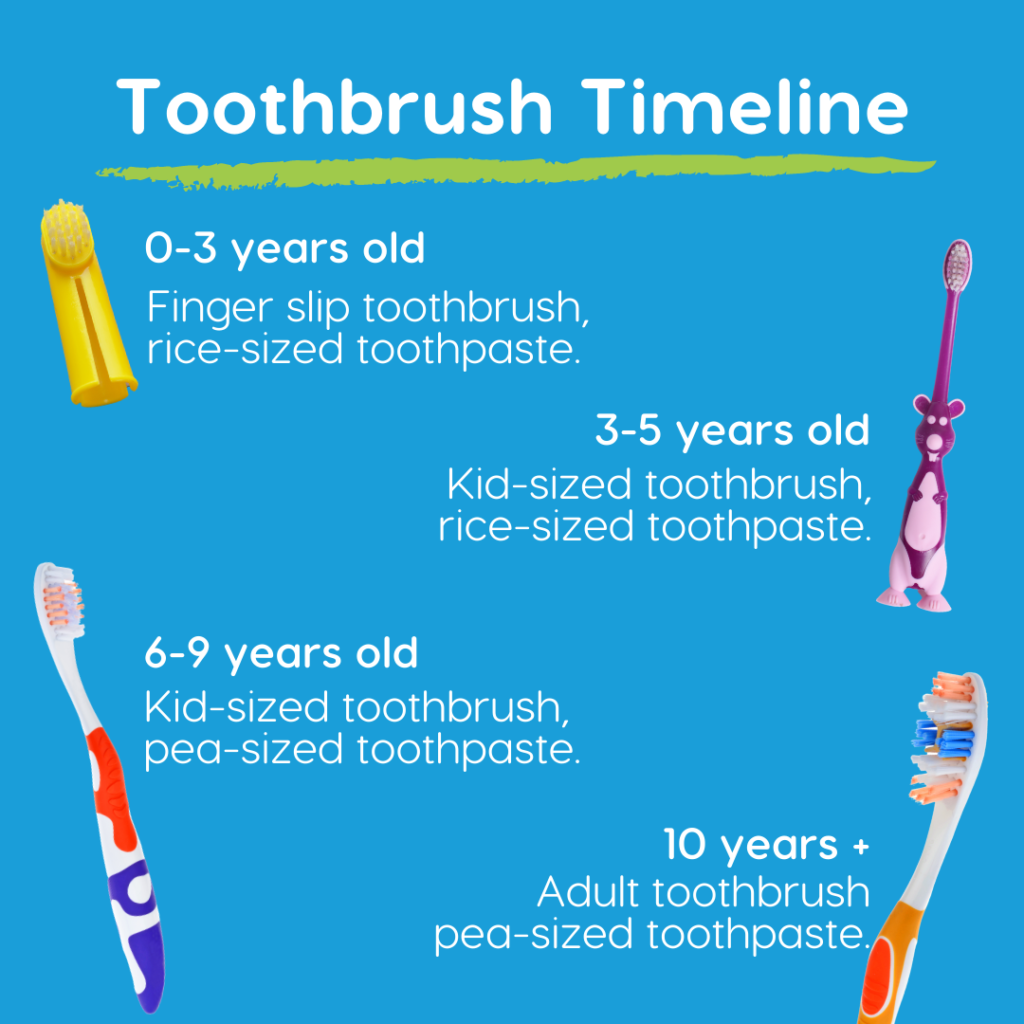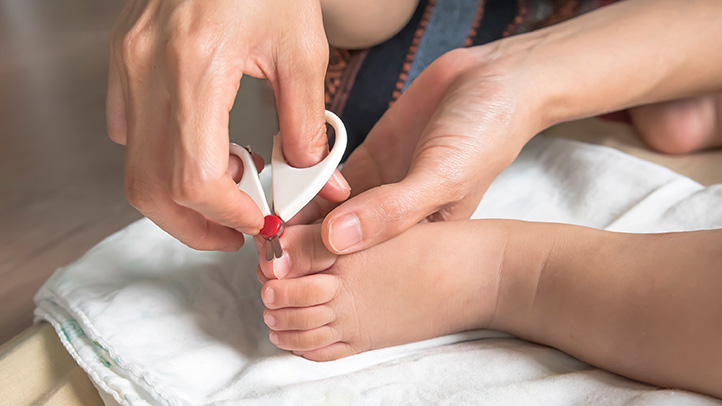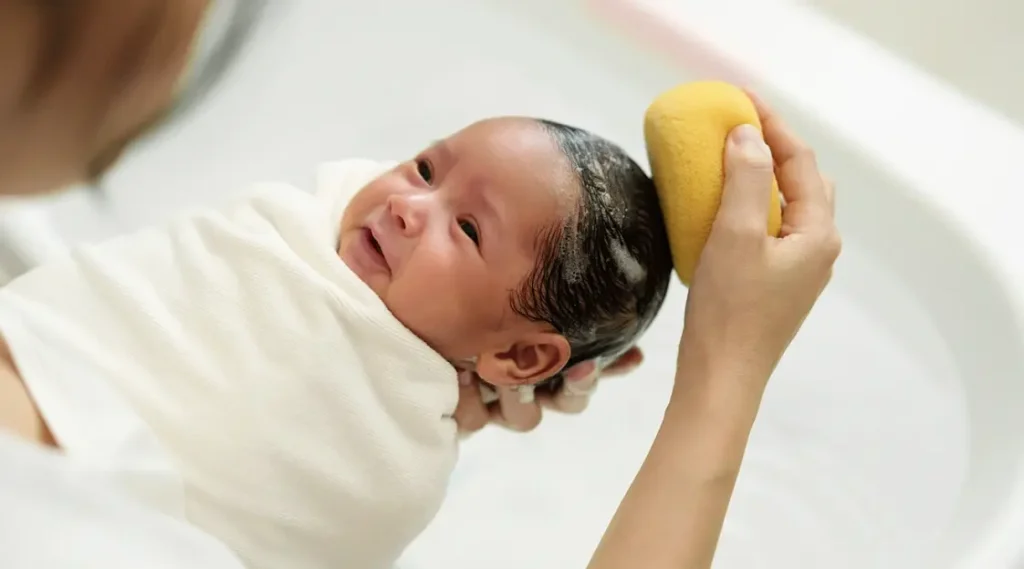Babies should not use adult toothpaste. Adult toothpaste contains too much fluoride and can be harmful to infants.
Dental care is essential from an early age. Parents often wonder if adult toothpaste is suitable for their babies. The answer is no; babies need specific toothpaste designed for their delicate gums and developing teeth. Adult toothpaste contains high levels of fluoride, which can cause dental fluorosis in young children.
It’s crucial to choose a toothpaste with a lower fluoride concentration, specially formulated for infants. This ensures the safety and health of your baby’s teeth. Starting good oral hygiene habits early lays the foundation for a lifetime of healthy teeth and gums. Always consult with your pediatric dentist for the best recommendations.
Introduction To Baby Dental Care
Caring for your baby’s teeth starts early. Proper dental care helps prevent cavities. It also ensures healthy gums. Knowing how to care for baby teeth is essential. Babies need special dental care products.
Importance Of Early Dental Hygiene
Baby teeth are important for chewing food. They help in speech development too. Healthy baby teeth lead to healthy adult teeth. Early dental care builds good habits. It prevents future dental problems.
Common Dental Care Products
Several products are designed for baby dental care. Below is a table listing common items:
| Product | Usage |
|---|---|
| Baby Toothbrush | Gently cleans baby’s teeth |
| Baby Toothpaste | Safe if swallowed, fluoride-free |
| Teething Gel | Soothes teething pain |
| Finger Brush | Easy to use for parents |
Here are some tips for using these products:
- Use a soft-bristled toothbrush.
- Choose a toothpaste without fluoride.
- Brush twice a day.
- Replace the toothbrush every three months.

Credit: pediatricdentalassociates.com
Differences Between Baby And Adult Toothpaste
Choosing the right toothpaste for your baby is crucial. Adult toothpaste contains ingredients that may not be safe for babies. This section explores the key differences between baby and adult toothpaste. Understanding these differences helps you make the best choice for your child’s oral health.
Ingredients Comparison
The ingredients in baby toothpaste are designed for sensitive gums and teeth. Adult toothpaste often contains abrasives and whitening agents. These can be too harsh for babies. Below is a comparison table of common ingredients:
| Ingredient | Baby Toothpaste | Adult Toothpaste |
|---|---|---|
| Fluoride | Low or None | Moderate to High |
| Abrasives | Mild or None | High |
| Whitening Agents | Absent | Present |
Fluoride Levels
Fluoride helps prevent cavities but can be harmful in high doses. Babies are more sensitive to fluoride levels. Baby toothpaste usually contains very low or no fluoride. This reduces the risk of dental fluorosis, which causes white spots on teeth.
Adult toothpaste contains higher fluoride levels. This is effective for older children and adults who can spit out the toothpaste. Here is a comparison of fluoride levels:
- Baby Toothpaste: 0 – 500 ppm (parts per million)
- Adult Toothpaste: 1000 – 1500 ppm
Choosing the right toothpaste ensures your baby’s teeth stay healthy. It also helps avoid unnecessary exposure to harmful ingredients.
Potential Risks Of Adult Toothpaste For Babies
Parents often wonder if babies can use adult toothpaste. The simple answer is no. Adult toothpaste can pose several risks to babies. These risks range from ingestion dangers to allergic reactions. Understanding these risks can help parents make safer choices for their babies’ oral care.
Ingestion Dangers
Babies cannot spit out toothpaste easily. This makes ingestion a significant risk. Adult toothpaste contains higher fluoride levels. High fluoride intake can cause dental fluorosis. This results in white or brown spots on teeth. Ingesting adult toothpaste may also cause stomach upset. Babies may experience nausea or vomiting.
Allergic Reactions
Babies have sensitive skin and gums. Ingredients in adult toothpaste can trigger allergic reactions. Common allergens include flavors, dyes, and preservatives. Symptoms of an allergic reaction include redness, swelling, and rashes. In severe cases, babies may have difficulty breathing. Always check labels for potential allergens.
| Risk | Details |
|---|---|
| Ingestion Dangers | High fluoride, dental fluorosis, stomach upset |
| Allergic Reactions | Redness, swelling, rashes, breathing difficulties |
Parents should use toothpaste specifically designed for babies. Baby toothpaste has lower fluoride levels. It also contains fewer allergens. This minimizes the risk of ingestion and allergic reactions. Always consult your pediatrician for advice on oral care products.

Credit: drkamihoss.com
Choosing The Right Toothpaste For Babies
Choosing the right toothpaste for babies is crucial. Babies have sensitive gums and developing teeth. Adult toothpaste can be too harsh. It often contains ingredients not suitable for infants. Understanding what to look for in baby toothpaste ensures your little one’s oral health.
Fluoride-free Options
Many baby toothpastes are fluoride-free. Fluoride is essential for adults, but not for babies. Too much fluoride can cause dental fluorosis. Fluoride-free toothpaste is safe if your baby swallows it. Look for toothpaste labeled specifically for infants.
Natural Ingredients
Natural ingredients are gentle on a baby’s mouth. These include organic xylitol and calcium carbonate. Avoid toothpastes with artificial flavors or colors. They may cause irritation.
Here is a simple table to help you choose:
| Ingredient | Why It’s Good |
|---|---|
| Organic Xylitol | Prevents cavities naturally |
| Calcium Carbonate | Gently cleans teeth |
| Aloe Vera | Soothes gums |
Using natural ingredients makes brushing safe and pleasant. Choose a toothpaste that is free from harmful chemicals. This ensures your baby’s teeth and gums stay healthy.
Proper Brushing Techniques For Babies
Brushing your baby’s teeth is crucial for good dental health. It helps prevent cavities and gum disease. Using the right techniques ensures your baby’s teeth stay clean and healthy. Let’s explore the best practices for brushing your baby’s teeth.
Using A Soft-bristled Brush
Always use a soft-bristled toothbrush for your baby. Hard bristles can hurt their gums. A soft brush is gentle yet effective. It cleans teeth without causing pain. Choose a toothbrush with a small head. It fits easily in your baby’s mouth.
Amount Of Toothpaste To Use
Use a very small amount of toothpaste. A smear or rice-sized amount is enough. If your baby is under three years old, use a fluoride-free toothpaste. For babies over three, a pea-sized amount of fluoride toothpaste is safe. Make sure your baby spits out the toothpaste after brushing.
Signs Your Baby Needs A Dentist
It’s important to know when your baby needs a dentist. Early dental visits can prevent future problems. Recognize the signs to ensure healthy teeth and gums.
Unusual Oral Symptoms
Watch for unusual oral symptoms in your baby. These could indicate the need for a dentist visit.
- Red or swollen gums
- White spots on teeth
- Bad breath
- Bleeding gums
If you notice any of these signs, consult a dentist. Early intervention can prevent serious issues.
Regular Check-ups
Regular dental check-ups are crucial for your baby’s oral health. Schedule the first visit by their first birthday.
- Ensure the dentist examines their gums and teeth.
- Discuss proper brushing techniques.
- Ask about fluoride treatments.
Frequent check-ups help monitor growth and development. They also help catch problems early.
| Age | Check-Up Frequency |
|---|---|
| 0-1 year | First visit by first birthday |
| 1-3 years | Every 6 months |
| 3-6 years | Every 6 months |
Creating A Fun Brushing Routine
Creating a fun brushing routine is essential for babies. It helps develop good oral hygiene habits early. It can also make brushing an enjoyable activity for both the baby and the parents.
Incorporating Games
Incorporating games into the brushing routine can make it more engaging. Here are some fun ideas:
- Sing a Song: Sing a song while brushing. It can make the time pass quickly.
- Brush Together: Brush your teeth with your baby. They will imitate you.
- Use a Timer: Set a timer for two minutes. Make it a race to brush until the timer goes off.
Using Educational Tools
Educational tools can make brushing both fun and informative. Consider these options:
| Tool | Description |
|---|---|
| Storybooks | Read storybooks about brushing teeth. It can teach and entertain. |
| Brushing Apps | Use brushing apps with fun characters. They can guide and motivate your baby. |
| Colorful Toothbrushes | Choose colorful toothbrushes. They can make the process more appealing. |
Creating a fun brushing routine will help your baby enjoy brushing. It will also ensure they look forward to this daily habit.
Faqs On Baby Dental Care
Parents often have many questions about their baby’s dental health. It’s crucial to address these concerns to ensure proper dental care from an early age. Below, we’ve compiled some frequently asked questions and expert recommendations to help you navigate baby dental care.
Common Parental Concerns
Many parents wonder if babies can use adult toothpaste. The short answer is no. Adult toothpaste contains higher levels of fluoride which can be harmful to babies. Babies tend to swallow toothpaste rather than spit it out. This can lead to a condition known as dental fluorosis, which affects the appearance of the teeth.
Another common concern is the timing of the first dental visit. According to experts, babies should visit the dentist by their first birthday. Early dental visits help in identifying any potential issues and provide guidance on proper oral care.
Parents also worry about the right time to start brushing their baby’s teeth. Start brushing as soon as the first tooth appears. Use a soft-bristled brush and a small amount of fluoride-free toothpaste.
Expert Recommendations
Experts recommend using toothpaste specifically designed for babies. Baby toothpaste contains lower fluoride levels and is safe if swallowed. Look for toothpaste with the ADA (American Dental Association) seal of approval.
Here is a simple table to summarize the key points:
| Concern | Recommendation |
|---|---|
| Can babies use adult toothpaste? | No, use baby toothpaste. |
| First dental visit | By first birthday |
| When to start brushing? | When the first tooth appears |
Here are some additional tips for baby dental care:
- Clean gums with a soft, damp cloth before teeth appear.
- Brush twice daily, morning and night.
- Avoid putting babies to bed with bottles to prevent tooth decay.
By following these guidelines, you can ensure your baby has a healthy smile from the start.
Conclusion And Final Safety Tips
Ensuring the safety of your baby’s oral hygiene is crucial. Selecting the right toothpaste is a significant part of this process. This section provides a summary and essential tips to keep your baby’s teeth healthy.
Recap Of Key Points
- Babies should not use adult toothpaste.
- Adult toothpaste contains more fluoride than baby toothpaste.
- Excessive fluoride can harm a baby’s developing teeth.
- Use a rice-grain-sized amount of baby toothpaste.
- Supervise your baby while brushing their teeth.
Encouraging Good Habits Early
Start brushing your baby’s teeth as soon as they appear. Use a soft-bristled toothbrush. Use a small amount of fluoride-free baby toothpaste. Make brushing a fun activity. Sing songs or tell stories while brushing.
Brush your baby’s teeth twice a day. Help them understand the importance of oral hygiene. Visit a pediatric dentist by your baby’s first birthday. Regular dental check-ups are essential. A dentist can provide personalized advice.
Encourage your baby to spit out the toothpaste. Swallowing too much toothpaste can be harmful. Teach them to rinse their mouth with water after brushing. This helps remove any remaining toothpaste.
Set a good example by brushing your teeth together. Children learn by watching their parents. Show them the correct way to brush. Praise them for their efforts and make it a positive experience.
Use a fluoride-free toothpaste until your child learns to spit. Once they can spit, switch to a fluoride toothpaste recommended for children. Follow the dentist’s advice on the right time to switch.

Credit: www.facebook.com
Frequently Asked Questions
Is Adult Toothpaste Safe For Babies?
Adult toothpaste is not safe for babies. Use fluoride-free toothpaste specifically designed for infants to avoid potential harm.
Can I Use Regular Toothpaste On My Baby?
No, do not use regular toothpaste on your baby. Use fluoride-free baby toothpaste to protect their sensitive gums and teeth.
Can You Brush Baby Teeth With Adult Toothpaste?
It’s not recommended to use adult toothpaste for baby teeth. Use fluoride toothpaste designed for children instead.
Why Can’t Toddlers Use Adult Toothpaste?
Toddlers can’t use adult toothpaste due to high fluoride content. It can cause dental fluorosis if swallowed. Use toddler-specific toothpaste instead.
Conclusion
Choosing the right toothpaste for your baby is essential for their dental health. Adult toothpaste may contain ingredients unsuitable for young children. Opt for fluoride-free, child-specific toothpaste to ensure safety. Start good oral hygiene early to build lifelong habits. Always consult your pediatric dentist for personalized advice.


